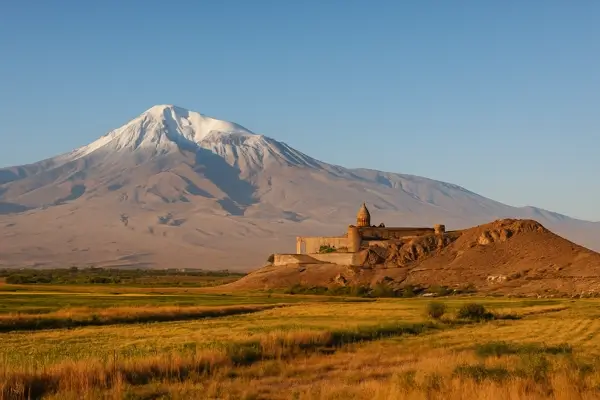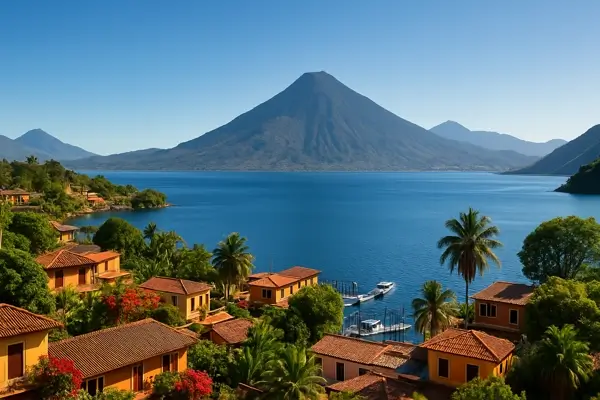
The First Country to Adopt Christianity
Armenia holds the distinction of being the first country in the world to adopt Christianity as its state religion in 301 AD. The Armenian Apostolic Church remains the dominant religion in the country, and the Etchmiadzin Cathedral, located near Yerevan, is considered the oldest cathedral in the world.
A Land of Ancient History
Armenia has a rich and ancient history that spans thousands of years. It is one of the oldest countries in the world, with its first kingdom, Urartu, established around the 9th century BC. The country’s history is marked by numerous empires, including the Persian, Roman, Byzantine, and Ottoman Empires, and its culture has been shaped by centuries of conquest, resilience, and adaptation.
Mount Ararat
Mount Ararat, located just across the border in Turkey, is a symbol of Armenian identity and is deeply significant in Armenian culture and history. It is traditionally believed to be the resting place of Noah's Ark, as described in the Bible. While it lies outside Armenia’s modern borders, it remains an iconic national symbol.
A Unique Alphabet
Armenia has its own unique alphabet, created by Saint Mesrop Mashtots in 405 AD. The Armenian alphabet consists of 38 letters and is still in use today. The invention of this alphabet helped preserve the Armenian language and culture and has played a significant role in the development of Armenian identity.
The Kingdom of Urartu
Before the formation of the Armenian Kingdom, the region was home to the ancient Kingdom of Urartu, which thrived between the 9th and 6th centuries BC. The ruins of Urartian cities, such as the fortress of Erebuni near Yerevan, provide a glimpse into this ancient civilization’s engineering and architectural achievements.
The Armenian Genocide
One of the darkest chapters of Armenian history is the Armenian Genocide, which took place during World War I between 1915 and 1923. It is estimated that 1.5 million Armenians were killed by the Ottoman Empire. Despite international recognition and efforts to commemorate the victims, the genocide remains a sensitive and contentious issue in global politics.
Rich Culinary Heritage
Armenian cuisine is known for its variety and depth of flavor. Traditional dishes include khorovats (barbecued meat), dolma (stuffed grape leaves), lavash (a thin flatbread), and a variety of kebabs. The country also produces wine, and Armenia is considered one of the oldest wine-producing regions in the world, with wine-making traditions dating back over 6,000 years.
The Armenian Highlands
Armenia is located in the Armenian Highlands, a region known for its rugged mountains and valleys. The country’s landscape is dotted with ancient monasteries, churches, and fortresses. The picturesque scenery, combined with Armenia’s rich cultural heritage, makes it a popular destination for travelers interested in history, culture, and nature.
Yerevan – The "Pink City"
Yerevan, the capital of Armenia, is often called the "Pink City" due to the distinctive pinkish hue of the volcanic stone used in many of its buildings. Founded in 782 BC, Yerevan is one of the oldest cities in the world and today is a thriving cultural and economic center.
Cultural Contributions
Armenia has made significant contributions to global culture, especially in the fields of music, art, and literature. The country is famous for its traditional music, including the duduk, a wind instrument that has been recognized by UNESCO as part of the Intangible Cultural Heritage of Humanity. Armenia also has a long history of literary tradition, with poets such as Hovhannes Shiraz and writers like William Saroyan making lasting impacts.
The Republic of Artsakh
In addition to Armenia, there is a disputed region known as the Republic of Artsakh (Nagorno-Karabakh). This area has been a source of tension between Armenia and Azerbaijan, especially after the collapse of the Soviet Union. Despite political conflicts, the region maintains its distinct cultural and historical significance to the Armenian people.
Armenian Chess Masters
Armenia has a rich tradition in chess, and it is often considered a chess powerhouse. The country has produced numerous chess grandmasters, and it is a common activity enjoyed by Armenians of all ages. The country’s commitment to chess education and tournaments has made it one of the world’s leading nations in the sport.
Khachkars
Armenia is famous for its khachkars, which are intricately carved stone crosses. These crosses, which often feature complex geometric designs and religious symbols, are an important part of Armenian culture and can be found in churches, cemeteries, and monasteries throughout the country. They are considered a symbol of Armenia's Christian heritage.
The Lake Sevan
Lake Sevan is one of the largest freshwater high-altitude lakes in the world and is located in the eastern part of Armenia. The lake is known for its stunning beauty and is a popular destination for tourists and locals alike. The ancient Sevanavank Monastery, located on a peninsula in the lake, offers breathtaking views of the surrounding area.



